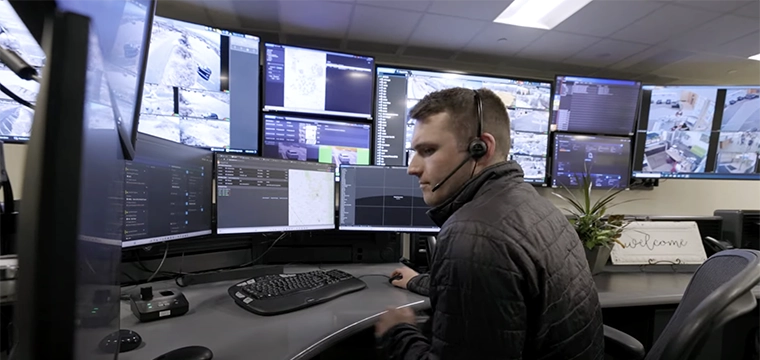Ohio State students donate money to Relay for Life via a mobile terminal at a charity gathering in the Union. Duke University pilots declining balance payments against food service accounts using a handheld palm computer. Creighton University in Nebraska authorizes access to basketball games at wireless terminals. The University of Pittsburgh students authenticate their eligibility to use of the local bus network on-board the vehicle.
What do all these transactions have in common? They all involve the student ID card and they all capitalize on Wi-Fi technology.
Once the domain of proprietary protocols, mobile service professionals, and hard-core geeks–the act of connecting a computer to a network without wires has become commonplace. Today virtually anyone can setup a fast wireless for under $200. Many have compared the Wi-Fi phenomenon to the early days of the Internet, when low cost connectivity enabled the deployment of open networks at a dizzying pace.
Campus card programs have begun uncovering the significance of Wi-Fi and are beginning to demonstrate its potential in a variety of ways. But the Wi-Fi revolution could hasten a complete transformation in how we identify individuals and provide services in the coming years.
What is Wi-FI?
Wi-FI is short for Wireless-Fidelity and it is the name given to a series of standardized protocols for wireless network communication. Wi-Fi is quietly becoming the most important communication technology to emerge in 21st century. And just as quietly, campus card programs have begun using the new technology to leapfrog last generation card systems enabling a whole new level of flexibility and mobility.
Wi-Fi is not a generic term for wireless networking, but rather the specific protocols and procedures established under the IEEE’s 802.11b standard. To date, three distinct versions of 802.11 have been established: 802.11a, 802.11b (Wi-Fi), and 802.11g.
Wireless networking basics
Before we delve into the specifics of Wi-Fi and the differences between the 802.11 standards, it is important to understand the basics of wireless networking.
Basically, a wireless network is a means to extend the geographic reach of a physical, wired network beyond the limits of the wires. A wireless point is connected to a physical network (e.g. a cable modem, DSL modem, network hub). The point enables PCs or other devices equipped with wireless network cards to communicate with it via radio frequency communication (see RFID basics in this issue). Any device with an appropriate wireless network card and logon credentials can share data via the wireless point so long as it is within the point’s geographic reach.
What does this mean? It means that we can walk into a Starbucks, anairport terminal, or a campus union and access the Internet with a laptop or handheld computer. It means that we may finally be free of phone lines and network connections. It means that the dream of working from the park or the beach may finally be within reach.
So what about all these
numbers and letters?
As with most standards bodies, the Institute of Electrical and Electronics Engineers (IEEE) likes to string a confusing series of numbers and letters together to signify their work. Thus they designated their wireless communication standards with the ‘appealing’ 802.11 name. The first 802.11 standard was released in the late 1990s under the name 802.11b. It utilizes the 2.4 GHz frequency band and enables data transfer at a rate of 11 Mbps at a distance of up to 100 yards. This is the dominant version of Wi-Fi with an estimated 9 million access points and network cards shipped in 2001 and 12 million in 2002 (research conducted by the Gartner Group as cited in Fortune.com and Wired).
The second variation, 802.11a, was finalized in 1999. It operates at a higher frequency band, between 5 and 6 GHz, and delivers speeds ranging from 11 - 54 Mbps. While 802.11a is faster than 802.11b, they are incompatible technologies because they operate at different frequencies. And because 802.11b is much more widely used, the a variety has not been widely adopted.
The third variation is 802.11g. It operates at the same 2.4 GHz frequency as 802.11b but provides the higher speed provided by 802.11a. Thus, it has the benefits of higher speed and compatibility with the dominant 802.11b. The 802.11g standard has not yet been finalized with the IEEE however, manufacturers are already shipping products that meet the pending standard.
Deploying Wi-Fi
on college campuses
Wi-Fi has a range of 300 feet, or a football field, between a wireless access point and a device (e.g. personal computer, palmtop, card reader). Thus it can take a great number of access points to cover an entire college campus. Despite this fact, many campuses have embarked on full coverage Wi-Fi networks, while many others have elected to enable key areas on campus such as libraries and student unions.
As an example, Jon Gear, Director, BuckID Card Services at The Ohio State University, reported that his campus would have full coverage throughout all academic buildings by the end of the summer.
This growing proliferation of Wi-Fi on campuses creates an opportunity for card programs to tie into this infrastructure and improve service delivery options. According to Mr. Gear, his office is utilizing the campus Wi-Fi network to verify student eligibility in non-wired locations.
Using a Cisco Wireless Access Point and a high gain antenna for better coverage, OSU can connect a standard activity reader to their online debit card system wirelessly.
Says Mr. Gear, “early users of the setup have been student groups accepting the BuckID Card during fund raising activities.” This summer a variety of mobile vendors (e.g. hotdog vendors) will begin using the Wi-Fi network to accept payments.
“With the high gain antenna, we are able to reach out several hundred yards,” said Mr. Gear. In the future, OSU plans to expand the Wi-Fi network by placing access points on the emergency response call poles around the campus.
In addition to the wireless connectivity for activity and card transaction readers, a Wi-Fi network can enable laptop-based access to the card system. According to Mark Reinart, Manager of Marketing and Business Development for card system vendor Diebold, campuses swipe cards in the field and create or modify an individual’s database record. “They can pull up cardholder photos and verify eligibility from the middle of the campus union,” says Mr. Reinart. “It can be a great way to add flexibility to your program.”
Where do we go from here?
Certainly, it would be impractical for a campus card office to build the wireless network for the institution. It would not, however, be unheard of for the card office to enable certain key areas with Wi-Fi capability (e.g. the student union area where temporary vendors might gather). It is likely, however, that your campus has, or has plans for, wireless infrastructure.
Some of the keys to consider as you evaluate wireless access for your card transactions include:
Are your card readers IP
addressable?
In other words, are they easily added to a TCP/IP network. Or does your vendor have other readers of external add-on components to make your readers IP addressable. This is a question that you should pose to your card system vendor so that you know where you stand. Remember, however, that IP addressable readers are not required for wireless network access, but they will make the process more smooth.
What type of encryption will you
require to perform wireless
transactions?
Wi-Fi has built-in encryption capabilities. Your campus may have other requirements. And your system vendor may suggest security precautions as well. Develop a plan to ensure that the data is not transferred in the clear.
What should I do today to prepare for this wireless revolution?
Most of all, start looking around. Wi-Fi is a technology revolution that is transforming communication in business, entertainment, and education. Our card programs can be made more mobile, less encumbered, and more robust–and, for once, the infrastructure to do this may come out of someone else’s budget.
Talk to your campus IT leaders and get involved in the wireless discussions and planning committees at your institution. And get ready for a wireless future.




